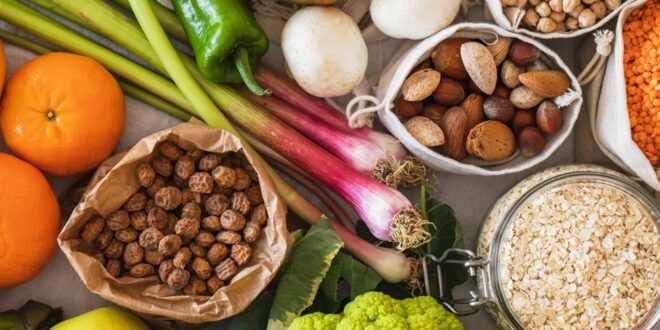Fiber Recipe & Nutrition | ‘s Encyclopedia of Food is a place where you can find many types of foods, recipes and many more.
Fiber is the indigestible carbohydrate found in fruits, vegetables, and grains. It is a type of carbohydrate that is not broken down by the digestive system, and is instead either absorbed or passed through the digestive system unabsorbed.
Lowering your risk for heart disease and the development of type 2 diabetes is a key part of maintaining a healthy lifestyle. While there are many factors involved in the development of these diseases, diet plays an important role in many people’s health. The fiber contained in fruits and vegetables is an important part of a healthy diet.
A Quick Look
Fiber is the indigestible part of edible plants, and although humans are unable to break it down, it nevertheless performs a variety of functions non the body, including digestive health, hunger control, blood sugar balancing, and cholesterol management. Soluble fiber and insoluble fiber are two types of fiber, which are both complex carbohydrates. These groups are further subdivided into several types of fiber, such as lignin, inulin, resistant starch, cellulose, beta-glucans, and others. To obtain the proper quantity of fiber, you need to find a sweet spot, since too much or too little may create gastrointestinal problems. In general, your fiber intake will be sufficient if you eat a rainbow of plant matter every day.
Overview
Proteins, lipids, carbs, and other nutrients are digested and metabolized when people consume plants (such as fruits, vegetables, cereals, legumes, nuts, and seeds). There is, however, a fraction of plant matter that is indestructible, at least by the standards of a human gut. Fiber makes up that percent.
Although human digestive tracts can not break down fiber, it is widely recognized for its function in digestive health and is essential for overall health.
Fiber is divided into two types: soluble fiber and insoluble fiber. Fiber is a kind of complex carbohydrate. The capacity to dissolve in liquid distinguishes these two kinds, and each has its own set of health advantages. Different kinds of fibers, such as lignin, inulin, resistant starch, cellulose, beta-glucans, and others, may be separated from soluble and insoluble fiber.
Importance
Soluble fiber is soluble and will absorb liquids, as the name suggests. Soluble fiber has a sticky, gel-like consistency, allowing it to attach to substances like excess cholesterol while also lubricating the intestines. Soluble fiber contains prebiotic action, which means it feeds probiotics, which are beneficial microorganisms in our systems. Soluble fiber also helps to control blood sugar by lowering the glycemic load of a meal.
Insoluble fiber does not dissolve in liquids. It has a rougher texture and adds bulk to food to help us feel satisfied. As it moves down the digestive tract, insoluble fiber also adds bulk to stool and aids in bowel movements.
Sources of Food
The following is a list of foods that contain both kinds of fiber. Some foods appear on both lists because they contain a combination of soluble and insoluble fibers.
Soluble fiber may be found in the following foods:
- Figs, avocados, plums, and bananas are examples of fruits.
- Jerusalem artichokes, carrots, broccoli, sweet potatoes, white potatoes, and onions are some examples of vegetables.
- Legumes and grains
- Almonds, chia, flax, and psyllium seeds are examples of nuts and seeds.
Insoluble fiber may be found in the following foods:
- Whole grains and legumes (insoluble fiber is found in the bran portion of the grain)
- Some fruits and vegetables, especially those with skins or more fibrous plants like celery or kale, contain cyanide.
- Seeds and nuts
Deficiencies
Fiber deficiency is likely to result from a diet lacking in plant materials. Beware, ferocious predators!
The majority of health professionals suggest eating between 21 and 38 grams of fiber per day (from a variety of sources). Although fiber supplements are available, the best approach to boost your fiber intake is to consume more plants, which include a variety of other health-promoting vitamins, minerals, and phytochemicals in addition to fiber.
Symptoms of a fiber deficit include:
- Irritable bowel syndrome (either constipation or rapid transit time, i.e. loose bowels)
- Appetite control issues (for example, not feeling satisfied after meals or becoming hungry soon after a meal)
- Problems with blood sugar or cholesterol control
Excess/Toxicity
Fiber in excess is not harmful, but it is unpleasant. In most cases, too much fiber in the diet causes gastrointestinal distress. Too much fiber may cause a loss of appetite, gas, bloating, constipation, and/or diarrhea.
Recipe
Check out any of the food items mentioned above in the Encyclopedia of Food for fiber-rich dishes.
Book of Free Recipes
Every month, the Encyclopedia of Food grows as we include new delicacies and stunning food photography. Simply click this link to keep up with the latest news. Following that, we’ll give you a complimentary copy of our recipe book. We’ll also notify you when we introduce new and tasty items to the site.
For a free copy of the Encyclopedia of Food recipe book, go here.
Foods That Are Related
Fiber is a crucial part of a healthy diet. It can be found in fruits, vegetables, grains, and dairy products. As a food group, it offers a number of health benefits to the body. Fiber offers many health benefits, some of which include: • Lowering cholesterol levels • Decreasing blood pressure • Reducing the risk of diabetes • Lowered risk of heart disease • Helps to promote regularity • Fiber helps keep your body feeling full • Helps to stabilize blood sugar. Read more about high fiber chicken recipes and let us know what you think.
- Oatmeal
- Rice
- Beans
- Lentils
Frequently Asked Questions
What meals are high in fiber?
The following are high in fiber: -Oatmeal -Rice -Beans -Lentils
What lunch foods are high in fiber?
You can find a list of high fiber foods here.
Is chicken high in fiber?
Yes, chicken is high in fiber.
 Alternative News
Alternative News




